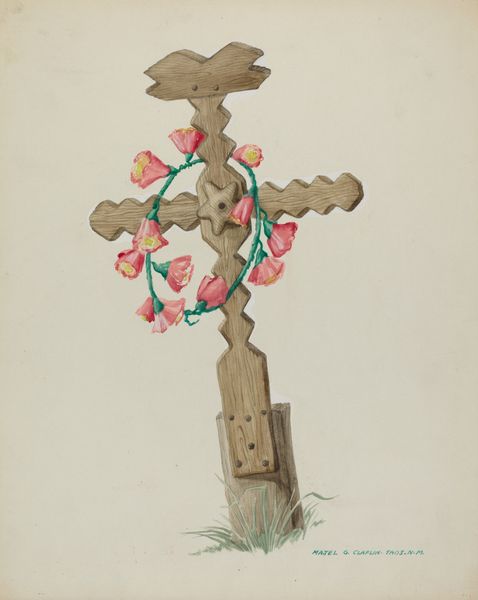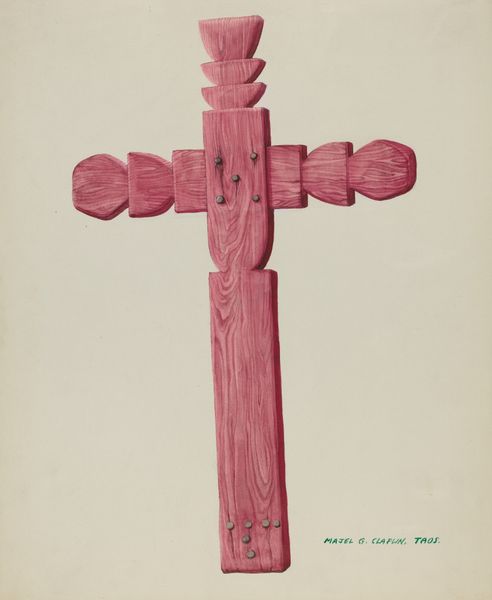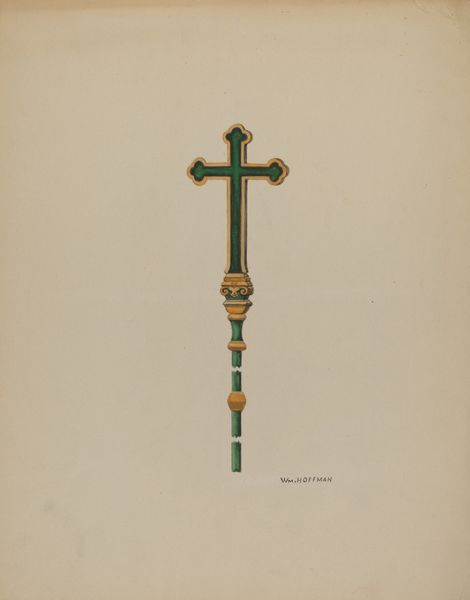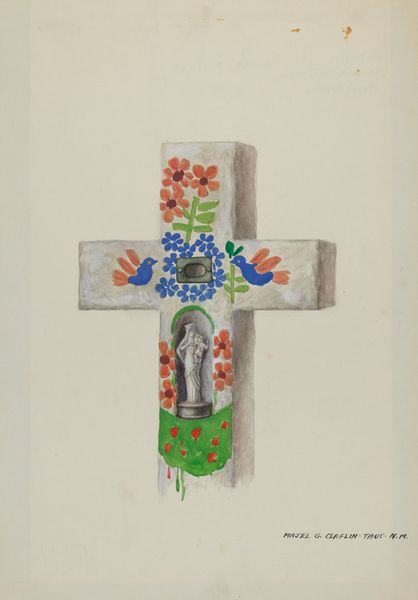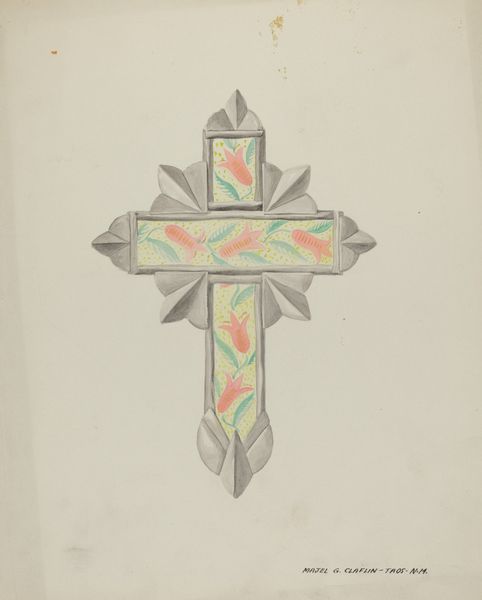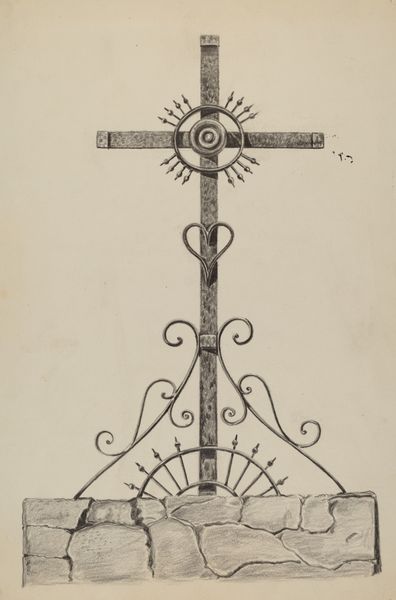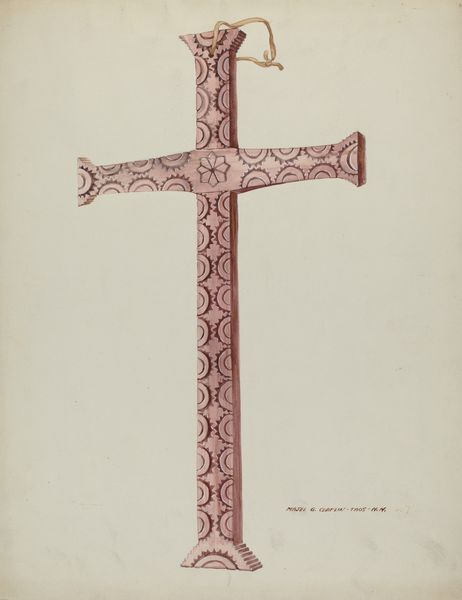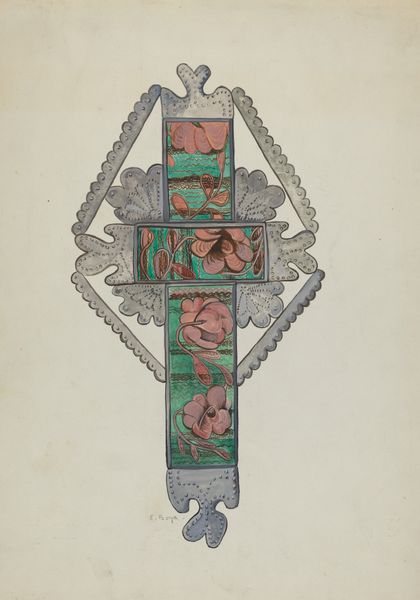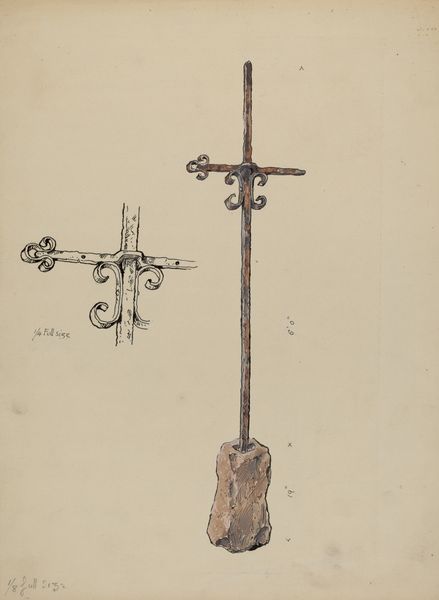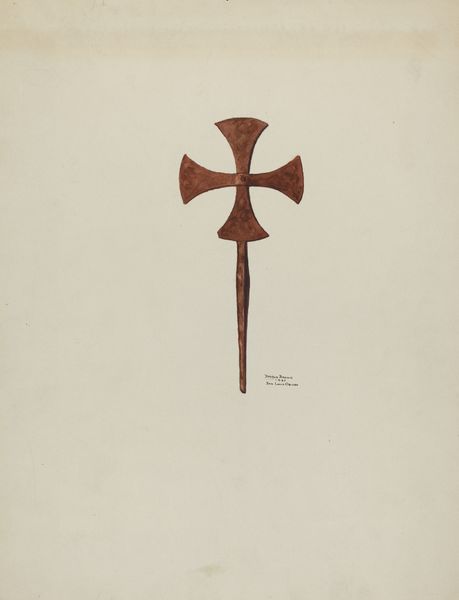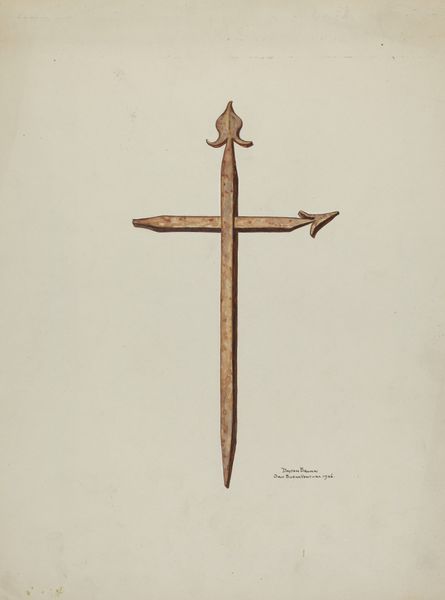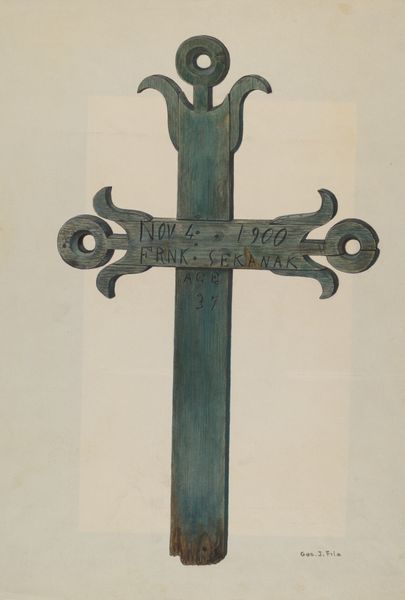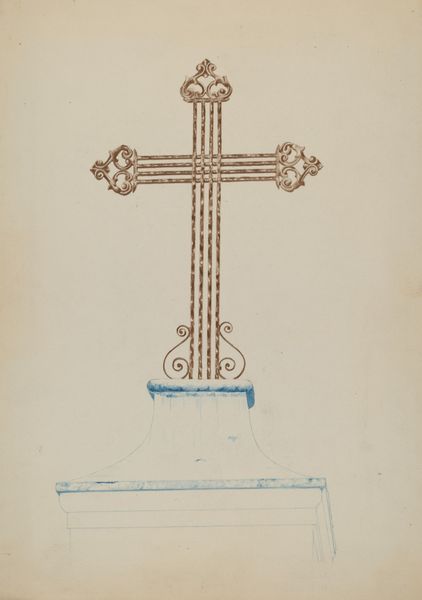
drawing, coloured-pencil, watercolor
#
drawing
#
coloured-pencil
#
water colours
#
watercolor
#
coloured pencil
#
folk-art
Dimensions: overall: 35.7 x 28.5 cm (14 1/16 x 11 1/4 in.) Original IAD Object: Approximately 4'high
Copyright: National Gallery of Art: CC0 1.0
Editor: Here we have Majel G. Claflin’s “Carved Cross - Grave,” dating from around 1937. It’s a watercolor and colored pencil drawing, and what strikes me is the contrast between the rough, wooden cross and the delicate flowers and ribbon adorning it. How do you interpret this work? Curator: That's a keen observation. It makes me think about the public role of memorial imagery. In many cultures, grave markers blend symbols of mourning with those of remembrance and even celebration of life. Is this depiction a faithful reproduction of an existing grave marker, or an imagined one? The socio-political context is key. Given the date, the Great Depression undoubtedly influenced the materials used and the overall aesthetic. What do you notice about the style? Editor: I see folk art elements in the simplified forms and directness of expression, kind of raw and heartfelt. Curator: Exactly. It bypasses academic artistic conventions to express something very personal. Consider the WPA Federal Art Project during that time, which encouraged art rooted in American experiences. This image could be related, reflecting a regional artistic identity and documenting vernacular traditions. Do you think that the materials chosen are meaningful, perhaps? Editor: Well, watercolor and colored pencil feel accessible, everyday. Maybe even the materials that were readily available to the artist. Curator: Precisely! And think about the act of memorializing. Whose stories are told and how? Was this a commission? Or a personal tribute? That simple act contains political dimensions: representation, remembrance, and who gets to be remembered. Editor: That's fascinating. I hadn't considered the political side of folk art and personal memorials before. Curator: The seemingly simple image contains layers when we view it through a historical lens. The act of memorializing connects deeply with power structures in society. Editor: Thanks for pointing that out. I see it now.
Comments
No comments
Be the first to comment and join the conversation on the ultimate creative platform.
